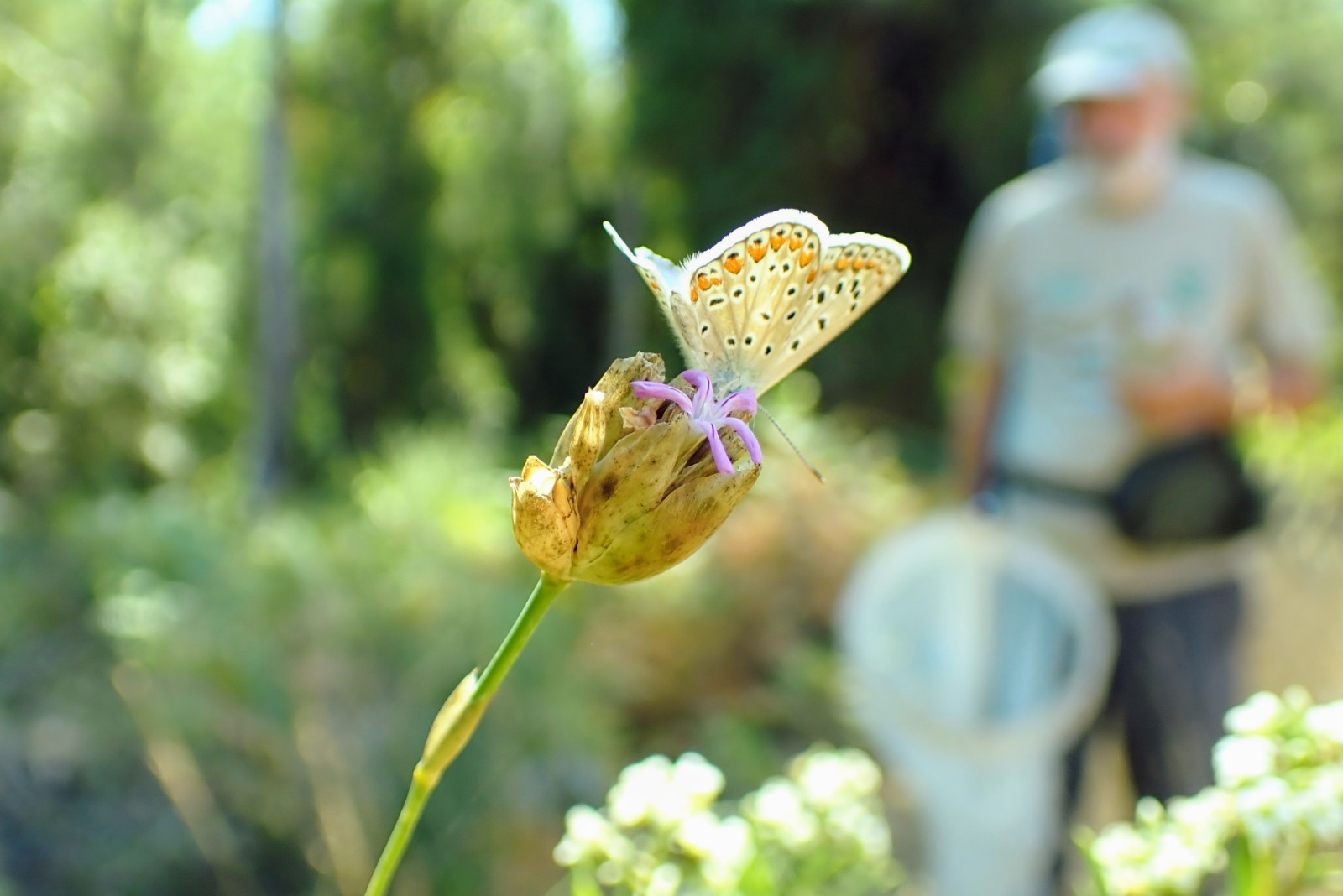ICTS-DOÑANA | El número de mariposas de pradera en Europa ha descendido casi un 30% en tres décadas
Datos de seguimiento de 18 países de la Unión Europea recogidos entre 1991 y 2020 muestran cómo las poblaciones de 15 especies comunes de mariposas de praderas están experimentando grandes declives
La ICTS-Doñana participa en este índice con datos recogidos en la Reserva Biológica de Doñana

Mariposa ícaro (Polyommatus icarus) en el Parque Nacional de Doñana. // Foto: J. Manuel Vidal Cordero
Las poblaciones de mariposas suelen presentar fluctuaciones de un año a otro, sin embargo, las tendencias a largo plazo pueden ser reveladoras de su estado real. Entre 1991 y 2020, el número de 15 especies comunes de mariposas de pradera han disminuido en un 29,5% en Europa, según datos de 18 países de la Unión Europea. Aunque el indicador usa el año 1991 como base, los declives en la abundancia, riqueza y diversidad de mariposas vienen ocurriendo antes de esta fecha. Para este índice se han utilizado datos de la European Butterfly Monitoring Scheme (eBMS) en la que participa de forma activa la ICTS-Doñana de la Estación Biológica de Doñana – CSIC aportando datos de manera periódica acerca de la situación de las mariposas en el espacio protegido.
El principal motivo de este declive son la intensificación agrícola y los cambios en los usos de suelo, como la pérdida, fragmentación y degradación del hábitat. El aumento de la agricultura intensiva implica el uso de agroquímicos, incluyendo pesticidas, lo cual puede conllevar una reducción dramática de las poblaciones de insectos, incluyendo las mariposas.
Según la Agencia Europea del Medioambiente que publica este índice, es difícil pronosticar cuándo sus poblaciones podrán recuperarse ya que dependen de una combinación de factores socioeconómicos y ambientales y de medidas políticas. Aunque algunas medidas implantadas en la Directiva Hábitat han ayudado a algunas poblaciones, los declives continúan ocurriendo tanto dentro como fuera de áreas protegidas.

Índice incluido en la nueva Ley de la Restauración de la Naturaleza
Las mariposas tienen un importante papel en el funcionamiento de los ecosistemas, ofrecen un amplio abanico de servicios ecosistémicos, como la polinización, a la vez que sirven como alimento para muchos otros animales. Además, reaccionan de forma rápida a los cambios que se producen en sus hábitats, por lo que son un indicador muy valioso del estado de salud de los ecosistemas.
Este índice de mariposas de pradera es uno de los tres indicadores de ecosistemas agrícolas incluidos en la Ley de la Restauración de la Naturaleza de la Unión Europea, recientemente aprobada. Los estados miembros deberán seleccionar al menos dos de los tres indicadores, entre los que se encuentran además indicadores sobre la proporción de superficie agraria con elementos paisajísticos de gran diversidad y las reservas de carbono orgánico en suelos minerales de tierras de cultivo, para poner en marcha medidas destinadas a lograr una tendencia creciente antes de 2030.
Referencia
Grassland butterfly index - EU aggregate, Butterfly Conservation Europe, European Butterfly Monitoring Scheme partnership, SPRING project. Data Set: https://ec.europa.eu/eurostat/databrowser/view/sdg_15_61/default/table?lang=en